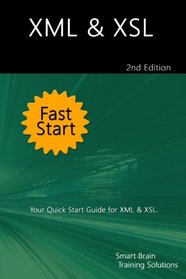Search -
XML & XSL Fast Start 2nd Edition: Your Quick Start Guide for XML & XSL
XML XSL Fast Start 2nd Edition Your Quick Start Guide for XML XSL
Author:
Need a precise, focused training guide for XML & XSL? Get this 130-page Fast Start guide to quickly learn XML & XSL fundamentals. Regardless of whether you are an IT manager, developer, administrator or an advanced user, this Fast Start guide will help you learn the essential concepts needed to successfully work with XML & XSL. Covers all vers... more »
Author:
Need a precise, focused training guide for XML & XSL? Get this 130-page Fast Start guide to quickly learn XML & XSL fundamentals. Regardless of whether you are an IT manager, developer, administrator or an advanced user, this Fast Start guide will help you learn the essential concepts needed to successfully work with XML & XSL. Covers all vers... more »
ISBN-13: 9781518808388
ISBN-10: 1518808387
Publication Date: 10/29/2015
Pages: 144
Rating: ?
ISBN-10: 1518808387
Publication Date: 10/29/2015
Pages: 144
Rating: ?
0 stars, based on 0 rating
Publisher: CreateSpace Independent Publishing Platform
Book Type: Paperback
Members Wishing: 0
Reviews: Amazon | Write a Review
Book Type: Paperback
Members Wishing: 0
Reviews: Amazon | Write a Review
Genres:
- Computers & Technology >> Programming >> Extensible Languages >> XML
- Computers & Technology >> Programming >> Extensible Languages >> XSL
- Reference




